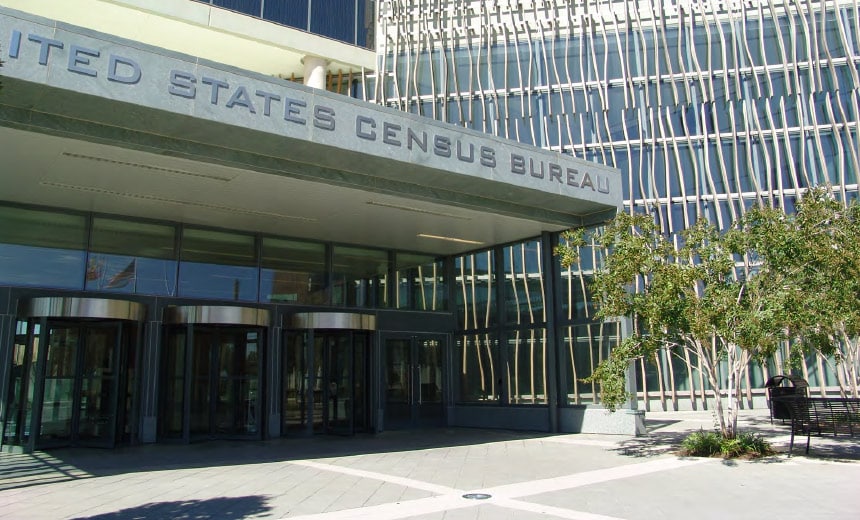Census Bureau Launches Post-2020 Review Operation

SUITLAND, Md. — The Census Bureau began the process of contacting around 40,000 eligible governments on Tuesday to determine if certain populations were undercounted in the 2020 national census.
The bureau’s Post-Census Group Quarters Review operation was brought in response to public feedback submitted after official tallies had been published. This process will allow tribal, state and local governmental units to request a review of their boundaries or housing counts to identify errors that may have occurred during the pandemic-constrained census period.
Although the bureau doesn’t expect its undercount to be significant, they may have occurred in settings like university student housing, residential treatment centers, nursing facilities, group homes, correctional facilities, workers’ group living quarters and job corps centers, according to the bureau. This one-time operation is separate from another census undertaking conducted since 1990 that allows local governments to request a review of official boundaries and housing counts for processing errors.
Results from a March post-enumeration survey and demographic analysis by the bureau indicated the nation’s non-Hispanic White population and the Asian population were overcounted, while Black, Native American or Alaska Native populations residing on reservations, and Hispanic populations were undercounted in 2020. Further, children aged 0-17 — and children 0-4 in particular — were undercounted in the census, although the bureau said this is common in population counts.
“At the national level, we did not estimate a significant undercount or overcount for the household population in the 2020 census,” bureau officials said in the report.
The bureau estimated that about 80,000 households in California and 17,500 in Oregon went uncounted because of displacement due to wildfires, while roughly 282,000 households between Alabama, Florida and Louisiana were displaced due to hurricanes in 2020.
Hispanic or Latino populations were undercounted by a net rate of just under 5% and Black populations were undercounted by a net rate of 3.3%, according to the bureau’s 2020 Post-Enumeration Survey Estimation Report. This data shows that Hispanic people were excluded from population tallies by over three times the rate of the previous census.
Although the net undercount rate of Black and Native American populations was higher than in the 2010 census, they were not statistically different. Additionally, respondents who identified as a race other than White, Black, Asian, Pacific Islander or Native American experienced a net undercount rate of 4.34%, which did differ significantly from the 2010 census.
Organizations like the National Urban League, the National Congress of American Indians and the National Association of Latino Elected and Appointed Officials have laid the blame for the undercounts at the feet of the Trump administration, which attempted to end the census before all data had been compiled and exclude people living in the country illegally, as previously reported by The Well News.
In October 2020, Trump-appointed Census Bureau officials decided to conclude operations weeks earlier than previously announced despite pandemic constraints that made it harder to accurately tally the country’s populace. In July 2019, The Well News reported that lawyers for the Department of Justice under former President Donald Trump were attempting to include a citizenship question on the 2020 census even though documents had already been printed at that point.
“Racial inequities are baked into the history of the census process and the institution of the Census Bureau as an agency,” NUL President and CEO Marc Morial said in a written statement. “To uphold the constitutional promise and protection of equal representation for all, the Census Bureau must immediately take steps to rethink and detoxify its operations relative to racial inequities, and Congress must fund research into new operations and sources of data starting next year.”
NALEO said in October 2020 that it believed the Trump administration’s attempts to prematurely end the bureau’s data collection was done to secure apportionment numbers to determine the number of each state’s congressional representatives before the end of that year. Ultimately, the Supreme Court issued a brief, unsigned order in October 2020 that allowed the bureau to wind down its operations.
Freedom of Information Act records obtained by the Brennan Center for Justice revealed that senior Trump administration officials pressed the bureau to conclude its nonresponse follow-up operation by Oct. 30 of that year. The apportionment clause of the 14th Amendment of the U.S. Constitution requires “the whole number of persons in each state” to be counted during censuses.
“A 2020 census that more than tripled the percentage of undercounted Latinos from census 2010 is completely unacceptable and further demonstrates the dire need for our nation to make fundamental changes in how we count U.S. residents,” NALEO Educational Fund CEO Arturo Vargas said in a written statement. “It is time for a new, modern approach to enhance the census’ accuracy.”
Reece can be reached at [email protected] and @ReeceNations























